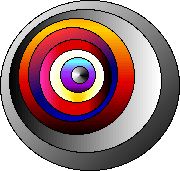
Core is a word, but is also the acronym standing for the first letters of the words clarify, organize, resolve (reflect) and examine (explain) that is used to organize concepts, discussions, and assignments in every class.
The term of every semester is roughly divided into these four parts:
I do that in order to move logically through books, ideas, arguments, hypotheses and new material presented by me and the authors.
Each part builds on the previous part's focus so that you really cannot organize a body of knowledge until you have defined important ideas that clarify the main points in the course.
Define key concepts and the ideas related to these details that help to explain by using many of the examples discussed in readings.
Represent in verbal & with visual displays of linguistic expressions the details an author uses. Apply ideas and concepts to numbers or photographs, and graphical data used by the readings or in our discussions.
Translate verbal, to visual, to symbolic, and then symbolic and visual information back into words.
Associate the pieces of these definitions and your reactions to some reliable organization
{initial fact –– influences––> subsequent factors}.
A –––> B
Be able to describe a passage from the readings and interpret its meanings.
Organize
Can you distinguish facts from opinions?
Describe an significant example of cause and effect; and decide how to chronologically or etymologically put together several different (that is to say related, or even contingent) facts.
For a more advanced understanding, be able to describe how you could build a graphical representation or model of a process where the contingent initial state is modified by the transition to a subsequent state.
Can some opinions be reconciled with facts?
[Abstraction]
{ i.e. the subsequent state influences new conditions of an initial state}In a group use either objects, paper & markers, or computer to collectively make a model of such an interactive process.
Here are two ways to consider the differences between human society and natural conditions in which humans live, even when humans are isolated from natural conditions:A reciprocal process is a contingent relation among parts where one thing impacts the other with an equal and opposite reaction that either reinforces or contradicts the initial condition.
The above diagrams could be considered a form of concept maps.
The first law of ecology is embedded in physics:
To every action there is an equal and opposite reaction.
If you can apply this law or principle of ecology to cases you read about, you are becoming a critical reader.
Reflect
Resolve disputed information (research) or reflect on themes in the readings:
What are some other examples where basic concepts in the class have a high degree of descriptive or, better, argumentative value? Can you use them in an argument?
Are there examples of new ideas that challenge original definitions?
Or are there areas of dispute over the precise meaning, or existence of some person, place or thing?
Describe in writing some layers of concepts or directly related arguments that are built on the basic premises of the course that were initially examined when we defined key ideas.
Really good students [Abstraction] can compare examples from the readings to a dialectical argument?
- Can you verbally describe the relation among several key concepts?
- Are you capable of analyzing a piece of prose or an essay?
- Can you generate an assumption from the data presented in the readings?
- How many different kinds of evidence can you find for that assumption based on the data?
- Do the examples from the authors explain, with sufficient power (convincing) , the points we examine?
- Can you defend an argument drawn from more than two or three authors?
- How do the examples from the cases we discuss help you to clarify, (describe) and analyze the important process represented by feedback [diagram below] with samples from the assigned readings?
Examine
That is: to look again carefully. The term also means to evaluate as you analyze what we have agreed are significant ideas and put that information together to make sense to you based on our class discussions of the texts so that you can speak and inform the class about what you think is most important about what you learned.
Such as, select ( For example: Is atmospheric temperature “ influenced” to any great extent by CH4 --methane--?) the main assumptions of the class and see if cases where those concepts are evident either sustain or refute assumptions we have made about ideas, concepts, and themes on the course.
Assess any arguments, models (for example test the flaws in Bateson’s model), hypotheses, theories, assertions, rules, schematics, or basic ideas you have learned that are at the center of the facts, data, interpretations and inquiries that are parts of the body of knowledge we have analyzed in the course.
Clarify, organize, resolve (reflect) and examine (explain) terms used in every class, the order of presenting information in the class, and the way you should lay out your ideas in the papers for the class.